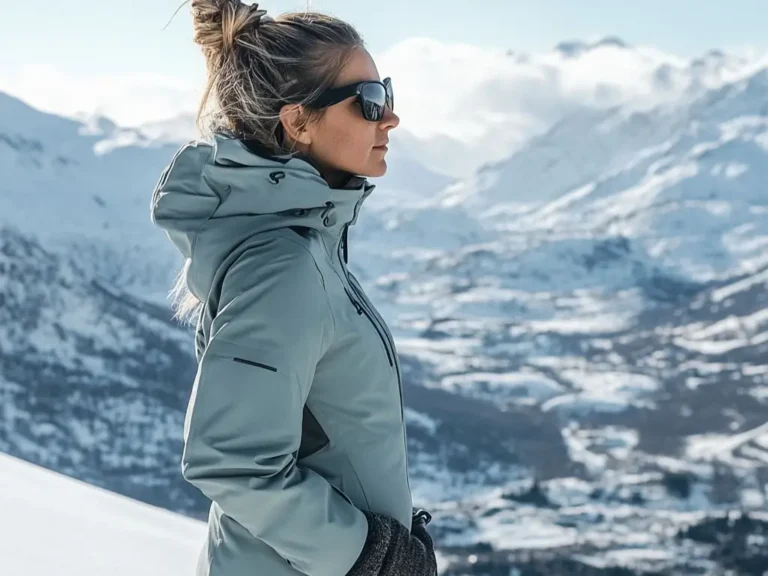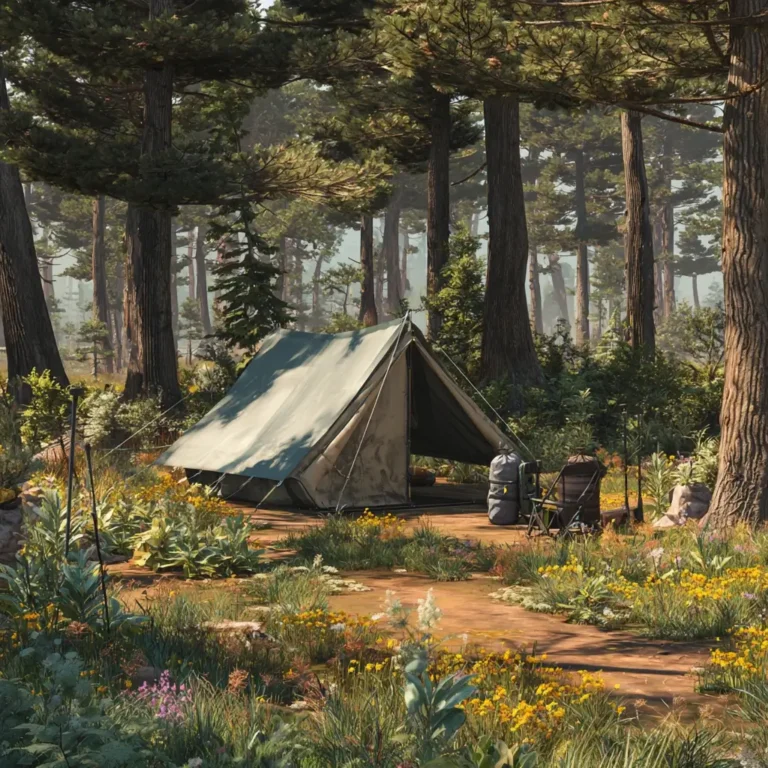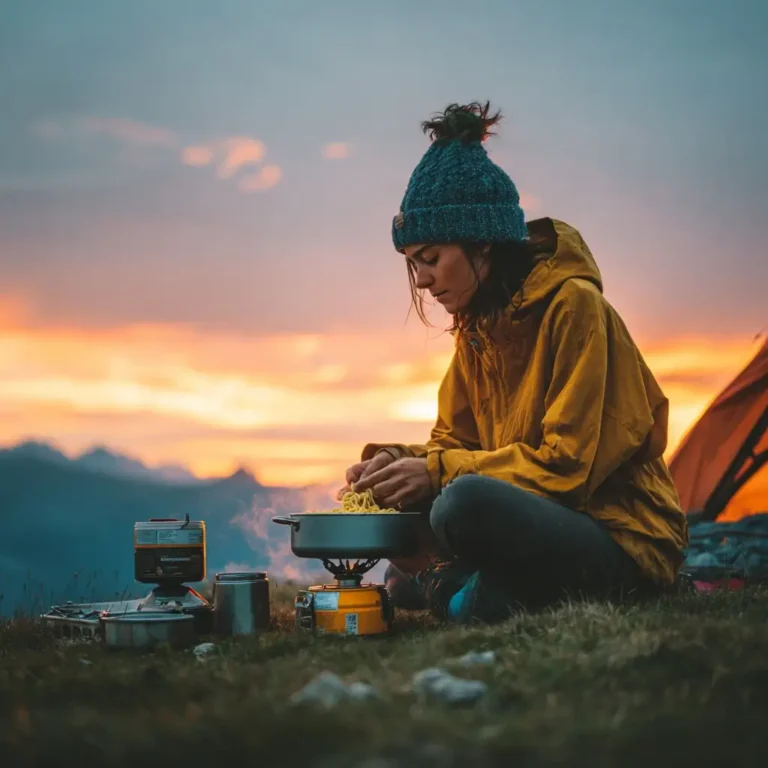Winter camping offers a unique adventure that allows us to experience breathtaking landscapes and tranquil surroundings. As the world transforms into a winter wonderland, we can take our skills outdoors, embracing the chill while enjoying cozy campfires and starry nights. To make the most of our winter camping trips, we need to prepare properly with the right gear, techniques, and mindset.
Imagine waking up to a stunning sunrise over a snowy landscape, feeling invigorated by the crisp air. With a few strategic tips and knowledge about winter survival, we can safely enjoy the beauty of nature during the colder months. Understanding the essentials of winter camping can help us stay warm, safe, and comfortable while fostering unforgettable memories.
As we dive into the world of winter camping, let’s explore crucial gear choices, strategies for staying warm, and some valuable tricks that will enhance our outdoor experience. From selecting the perfect site to choosing the best equipment for chilly conditions, we’re about to uncover everything we need to know for a successful and thrilling winter adventure!
Winter Camping Essentials

As we gear up for our winter camping adventures, it’s crucial to equip ourselves with the right gear, understand effective layering techniques, and choose appropriate high-calorie food selections. Each of these components plays a vital role in ensuring our safety and comfort in the cold.
Choosing the Right Gear
Selecting the appropriate gear is essential for a successful winter camping experience. We need items that can withstand harsh weather conditions and keep us warm.
Key items include:
- Four-Season Tent: Designed to handle heavy snow and strong winds.
- Insulated Sleeping Bag: Choose one rated for sub-zero temperatures.
- Winter Sleeping Pad: Provides insulation from the cold ground.
- Cooking Gear: Insulated pots and a reliable stove that functions in low temperatures.
- Compact Folding Campfire Grill: Perfect for cooking over an open fire, providing a sturdy and portable surface for grilling meals in winter conditions.
Investing in quality gear can make our trip much more enjoyable.
Layering Techniques for Warmth
Effective layering is critical for staying warm and comfortable in winter conditions. We should follow the three-layer system:
- Base Layer: This should be moisture-wicking and snug-fitting, like merino wool or synthetic fibers.
- Mid Layer: Insulating layers, such as fleece or down jackets, provide warmth. We can adjust this layer based on activity level.
- Outer Layer: A waterproof and windproof shell is necessary to protect us from the elements.
Remember to keep our heads, hands, and feet warm with insulated hats, gloves, and thermal socks!
High-Calorie Food Selections
When winter camping, our bodies burn more calories to stay warm. Therefore, high-calorie foods are essential. We should pack items that are lightweight and easy to prepare.
Consider these options:
- Nuts and Dried Fruits: Provide healthy fats and quick energy.
- Energy Bars: Convenient and packed with nutrients.
- Dehydrated Meals: Lightweight and easy to cook with boiling water.
- Hot Beverages: Hot chocolate or tea contribute warmth and hydration.
By prioritizing our food choices, we can ensure we have the energy needed for all our winter adventures!
Selecting the Perfect Campsite

When winter camping, choosing the right campsite is crucial to our safety and comfort. We need to consider snow conditions and how well our site protects us from the elements. Let’s explore these essential factors to find our ideal spot.
Understanding Snow Conditions
Snow conditions can significantly impact our campsite selection. We should look for a location with at least two to five feet of snow. This depth provides insulation against the cold ground and helps to keep us warmer during our stay.
It’s important to assess the type of snow as well. If it’s powdery, we might sink too deep, making our setup difficult. Conversely, if it’s compacted, it may provide a stable base. Remember to check for any signs of avalanche risk; staying away from slopes is vital for safety.
Understanding the snow density and any potential melting areas ensures we can create a sturdy and warm spot for our winter adventures!
Protection from the Elements
Protection from wind and other harsh weather conditions is vital for a successful winter camping experience. We want to choose a site that offers natural windbreaks like trees or hills. This shelter helps us stay warm and reduces the impact of biting winds.
Additionally, setting up our campsite further away from established trails and bodies of water is essential for reducing exposure to unpredictable weather changes.
Consider sunlight when selecting the site as well. Proximity to sunlight can help retain warmth, especially early in the day. Avoiding areas prone to accumulating snow or sudden drifts will also promote comfort and safety.
Taking these factors seriously will lead us to the perfect winter campsite!
Safety and Navigation

As we embark on our winter camping adventures, understanding safety measures and navigation techniques is essential. Being aware of winter hazards and knowing how to navigate snowy landscapes will ensure we have a secure and enjoyable experience.
Winter Hazards and First Aid
Winter camping presents unique hazards that we need to recognize and manage. These include hypothermia, frostbite, avalanches, and difficult terrain.
Hypothermia occurs when body temperature drops dangerously low. Symptoms include shivering, confusion, and fatigue. To combat this, we should wear layered clothing and stay dry.
Frostbite typically affects extremities like fingers and toes. Signs include numbness and discoloration. Keeping our hands and feet warm with appropriate gear is crucial.
Avalanches are potential dangers in mountainous areas. Always check local avalanche forecasts and understand how to recognize signs of instability.
First aid kits tailored for winter conditions should include items like thermal blankets, hand warmers, and supplies to treat injuries effectively.
Using GPS and Maps in Snow
Navigating through snowy landscapes requires skill and the right tools. We should rely on both GPS devices and traditional maps for accurate route planning.
GPS can be incredibly helpful, but we must ensure our devices are fully charged and have backup power sources, as battery life can drain quickly in cold conditions.
When using maps, we should familiarize ourselves with the terrain before we set out. This includes understanding how snow can cover important features, making landmarks harder to spot.
Essential navigation tips for winter camping include:
- Learning to read topographic maps: Contour lines and elevation can help us assess the difficulty of routes.
- Practicing with a compass: This old-school tool can save us during technology failures.
By combining modern technology with traditional navigation skills, we can confidently explore winter landscapes.
Building Snow Shelters

Building snow shelters is an essential skill for winter camping. These structures provide warmth and protection from harsh weather, allowing us to comfortably enjoy our time outdoors. Let’s explore two popular types of snow shelters: snow caves and igloos, as well as quinzhees.
Snow Caves and Igloos
Snow caves and igloos are fantastic winter shelters. To construct a snow cave, we start by digging into a snowdrift, creating a dome-shaped space. This shape is crucial, as it helps distribute weight and keeps the structure stable.
The air trapped within the walls provides insulation, while an entry tunnel lowers the chance of wind intrusion. We should ensure the cave is large enough for sleeping and storing gear, ideally around 2 feet high and 6 feet long for comfort.
Igloos, on the other hand, are made using snow blocks. We cut blocks from compacted snow, stacking them in a spiral, gradually narrowing towards the top. A well-built igloo is surprisingly warm, often retaining a temperature above freezing inside.
Quinzhees
Quinzhees offer another exciting alternative for snow shelter. To create one, we start by piling loose snow into a large mound, ensuring it’s at least 4 feet tall for adequate insulation. After letting it settle for a few hours, we carefully hollow out the center.
This technique creates a spacious interior, perfect for more than one person. We should leave a small entrance, and if possible, a ventilation hole at the top. The beauty of quinzhees lies in their simplicity and effectiveness, offering both warmth and space.
With these shelters in our toolkit, we can confidently tackle winter adventures!
Keeping Spirits High

Winter camping presents unique challenges, but we can elevate our experience through shared activities that foster connection and joy. Engaging in enjoyable pastimes helps us stay warm, both physically and emotionally, as we embrace the beauty of nature together.
Campfire Stories and Games
Gathering around a crackling campfire ignites a sense of community. There’s something magical about sharing tales under a starlit sky. We can take turns telling ghost stories or recounting memorable adventures.
Game Ideas:
- Two Truths and a Lie: A fun icebreaker that gets us laughing and guessing.
- Charades: Perfect for showcasing our playful sides.
Don’t forget to bring along instruments for sing-alongs! Music has a way of lifting our spirits and creating memorable moments that bond us together.
Photography and Nature Appreciation
Capturing the serene beauty of winter landscapes enhances our appreciation for nature. We can explore various photography techniques, using the snow’s reflection and soft light to create stunning images.
Tips for Great Shots:
- Use a tripod for stability and longer exposures.
- Look for interesting shadows and patterns in the snow.
Let’s also take time to appreciate the quiet sounds of the wilderness. Whether it’s birds chirping or the wind whispering through the trees, connecting with these elements enriches our experience and boosts our spirits. Each snapshot we take becomes a reminder of our adventure.
Our Experience with Winter Camping

Winter camping has been one of the most exhilarating and rewarding outdoor experiences we’ve ever had. There’s something magical about waking up to a crisp, snow-covered landscape, sipping hot coffee while bundled up in layers, and feeling completely immersed in the quiet beauty of nature. However, our first attempt at winter camping was anything but smooth. We underestimated the importance of proper gear, and freezing temperatures quickly taught us a lesson in preparation.
Over time, we’ve fine-tuned our approach. Layering became second nature, and investing in a four-season tent and an insulated sleeping bag made all the difference. We learned to choose campsites wisely—sheltered from the wind, yet positioned to catch the morning sun for warmth. Cooking in winter also became an adventure, from melting snow for water to fueling up on high-calorie meals to keep our energy levels up.
One of our favorite moments was watching the Northern Lights dance above our tent on a clear, icy night. It was a reminder of why we love winter camping—despite the cold, it brings unforgettable memories and a deep connection to nature. With the right mindset and preparation, it’s an adventure we’d recommend to anyone!
Our Tips for Winter Camping
1. Layer Properly – Use a moisture-wicking base layer, an insulating mid-layer (fleece or down), and a waterproof outer layer to stay warm and dry.
2. Invest in a Four-Season Tent – A sturdy tent designed for winter camping will protect you from heavy snow, wind, and freezing temperatures.
3. Choose the Right Sleeping Bag – Use a sleeping bag rated for subzero temperatures and pair it with an insulated sleeping pad to prevent heat loss.
4. Stay Hydrated – Cold weather dehydrates the body faster, so drink plenty of water and use insulated bottles to prevent freezing.
5. Eat High-Calorie Foods – Your body burns more energy in the cold, so pack nutrient-dense meals like nuts, energy bars, and hot, hearty meals.
6. Select a Safe Campsite – Set up camp in a wind-sheltered area, avoid avalanche zones, and ensure your site receives morning sunlight for warmth.
7. Keep Your Gear Dry – Store boots and damp clothes inside your tent or sleeping bag to prevent them from freezing overnight.
8. Use Hand & Foot Warmers – Disposable or rechargeable warmers provide extra heat in extreme conditions, keeping fingers and toes comfortable.
9. Master Winter Fire-Making – Bring waterproof matches, fire starters, and know how to build a fire in snowy or wet conditions.
10. Check the Weather & Be Prepared – Always check the forecast, carry emergency supplies, and have a backup plan in case of severe conditions.
FAQ – Winter Camping
How cold is too cold for winter camping?
Winter camping becomes extremely challenging and potentially dangerous when temperatures drop below 0°F (-18°C), especially without proper gear. Hypothermia and frostbite risks increase significantly in extreme cold, so beginners should start in milder winter conditions around 20°F to 30°F (-7°C to -1°C) and always be well-prepared.
Is camping in winter a good idea?
Yes! Winter camping is an incredible way to experience nature in its most peaceful and scenic state. With the right gear, layering, and preparation, it can be an exciting and rewarding adventure, offering solitude, stunning landscapes, and a unique challenge for outdoor enthusiasts.
Is 40 degrees F too cold to sleep in a tent?
No, 40°F (4°C) is manageable for tent camping with proper insulation. A sleeping bag rated for at least 20°F (-6°C), an insulated sleeping pad, and warm layers will keep you comfortable. However, without proper gear, 40°F can feel very cold, leading to discomfort and disrupted sleep.
Is a tent warmer than a car?
A tent can be warmer than a car because body heat and proper insulation help retain warmth inside. Cars, made of metal, tend to radiate cold and provide little insulation, making them feel colder unless you use extra blankets or a proper sleep system.

If you enjoyed this post, you might also love our article on Ultimate Cute Hiking Outfit Winter for more expert tips on staying warm, safe, and prepared in the great outdoors!
We’d love to hear from you! If this blog post about winter camping inspired you, leave a comment below and share your best winter camping tips, favorite gear, or memorable cold-weather experiences. Your insights could help fellow adventurers gear up for their next snowy escape!




